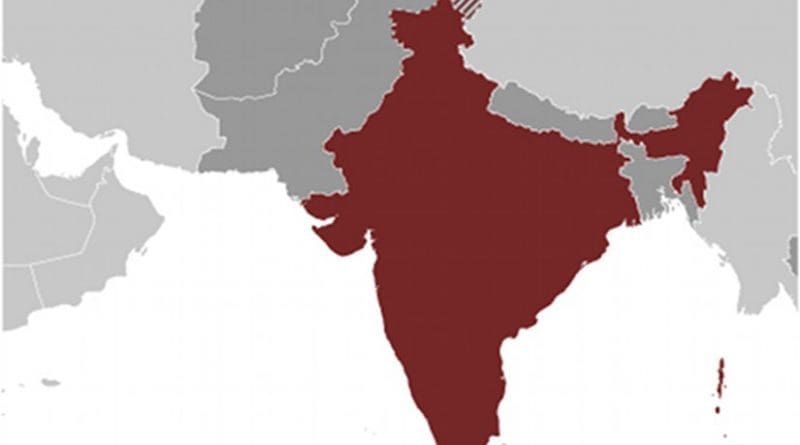Reprisal For Uri Attack: At Time And Place Of Indian Choosing – Analysis
By Cecil Victor*
In the clamour for “befitting reply” to Pakistan for the Uri attack, the Indian Army Director General of Military Operations (DGMO) has said that it will come at the time and place of our choosing. Good and sensible because Pakistan did not plan the attack without taking into account and making preparations for an immediate Indian response. India has refused to walk into the trap.
First the timing of the reprisals. September is Pakistan’s season of madness. All its major operations against India have occurred in and around this month in the hope that the issue will, once again, be internationalized during the meetings of the UN General Assembly which happen in September. By holding its hand, India has already set in motion a diplomatic offensive that has evoked encouraging results. The most gratifying is the cancellation of the joint military operations between Russia and Pakistan in Pakistan-occupied Kashmir, or what Pakistan calls ‘Azad Kashmir’. Let us wait and see how many nations support Pakistan in defending the indefensible.
US Secretary of State John Kerry has raised the Uri attack with Pakistan Prime Minister Nawaz Sharif but Indians would like to see what action America takes and what exactly would the spirit of the recently signed Logistics Exchange Memorandum of Agreement (LEMOA) between India and the US hold. We must not lose sight of the fact that by its brainless or very diabolically calculated manoeuvres in Iraq, Washington has created the Islamic State of Iraq and Syria (ISIS). Ditto by Britain and France in Libya. The former is a threat to the whole stretch from the Mediterranean to the Pacific and the Al Shabab/Boko Haram/ISIS combine is already in full swing along the eastern seaboard of the African continent.
Second, the target of retaliation. Since the Indian Army has long decried the return of the Haji Pir Pass to Pakistan after the 1965 war, it could localize its response to straightening out the Uri-Poonch bulge within the framework of the concept that the whole of Jammu and Kashmir is an integral part of India. It would end the threat to the Uri Brigade once and for all. It should be done with everything at our disposal – artillery barrage, air attack; Special Forces strike and replicate what the Indian paratroopers did in and around Pakistan’s Hyderabad (Sindh) city in 1971. Flatten the place.
Simultaneously, create conditions that will jeopardize the creation of the China-Pak Economic Corridor through Pakistan-occupied Kashmir. I have described it to be a steel collar around India’s neck (as different from the String Of Pearls being created by China in the Indian Ocean littoral). It must not be allowed to become a reality. I had suggested that in the spirit of good neighbourliness and peaceful coexistence India should have untrammelled transit to Afghanistan and beyond. Because Pakistan and China have vetoed the suggestion the corridor must not be allowed to traverse Indian territory.
Finally, all Indian actions must now be directed to the liberation of Pakistan-occupied Kashmir from Pakistan and China’s control.
Can we do it in the face of the nuclear factor? For too long we have allowed ourselves to be scared out of our wits over threats from Pakistanis that if India attacks Pakistan it would use the nuclear weapons in a first-strike mode. Much of this nuclear threat has been given credence by successive US administrations. India should take the position that since the US covertly allowed Pakistan to go nuclear through waivers under the Pressler Amendment, it is the moral responsibility of the US to prevent Pakistan from using these weapons.
As for the ‘fifth-generation warfare’ – a hybrid of state and non-state actors and jihadi terrorists trained and led by Pakistani personnel – India will have to bolster its defences in equally unconventional ways. Ad nauseum, Indian Army and other security forces have been attacked in their barracks by terrorists who have infiltrated the Line of Control. Pakistani terrorists have entered Indian high security zones with disgusting ease. It has happened time and again, and now Uri.
Many years ago Srinagar’s Charari Sharief shrine was invaded. The mastermind managed to slip past the cordon laid down by the Indian Army. Later a senior officer was killed in the cantonment area when one of two surviving terrorists popped up from behind a tree and shot him dead. These things would not have happened if the Indian Army had taken serious note of a study conducted by its Remount and Veterinary Corps in the late 1950s. That report lauded the hearing and seeing capacity of dogs and that they can be used effectively in several different types of work from sniffing explosives and as guard dogs to give warning of approaching danger.
The Indian Army has under-utilized this vital asset. I had suggested some years ago that the Indian Army increase the population of its Canine (K9) Brigade to at least one dog per unit of ten men. Training should be reoriented to use dogs in packs in particularly difficult terrain. They should be controlled by hand signals, whispers and body language which a dog can clearly see in the dark. It would preclude the need to raise one’s voice that can invite enemy fire (as it happened during Mumbai hotel siege).
*Cecil Victor is an Indian defence analyst. Comments and suggestions on this article can be sent on: [email protected]

